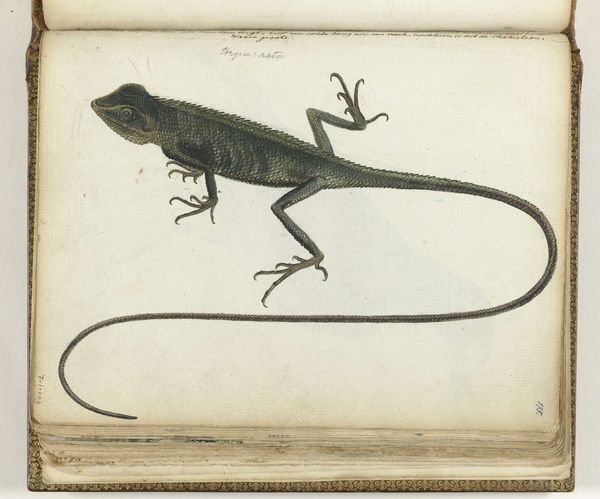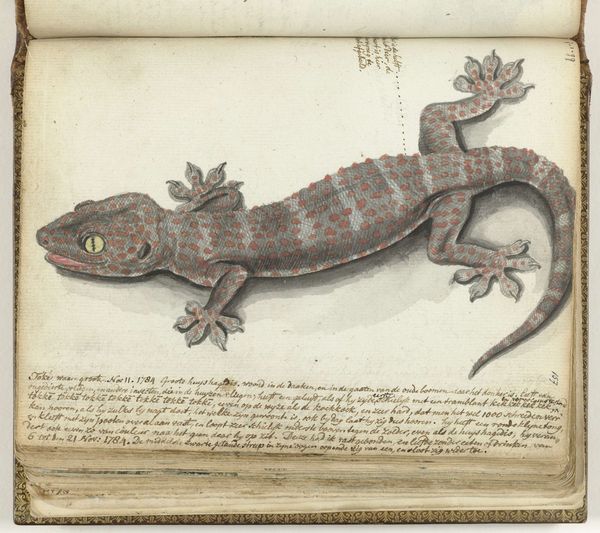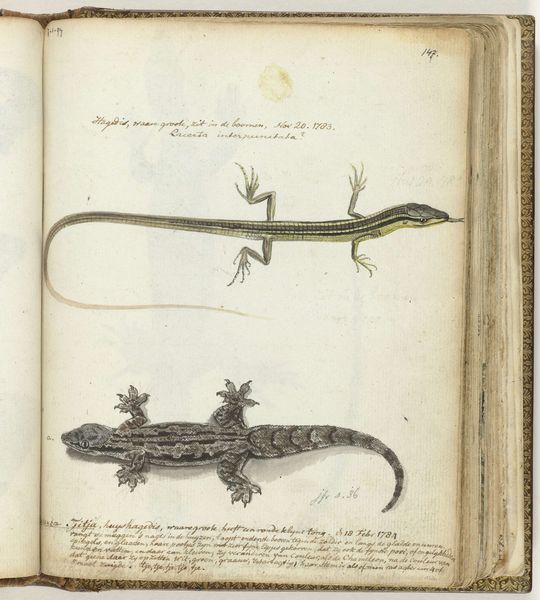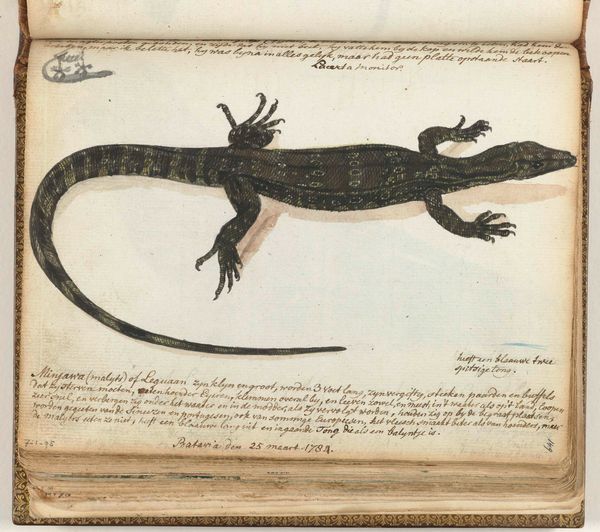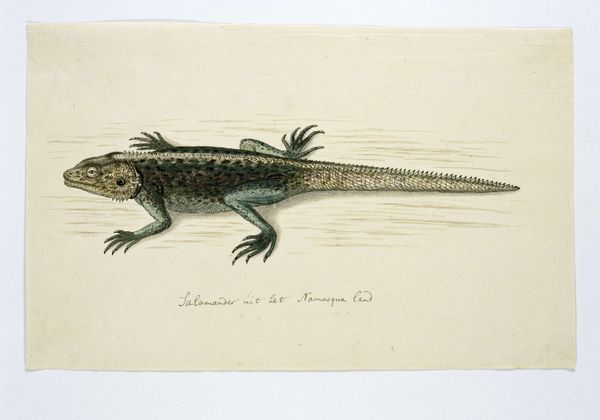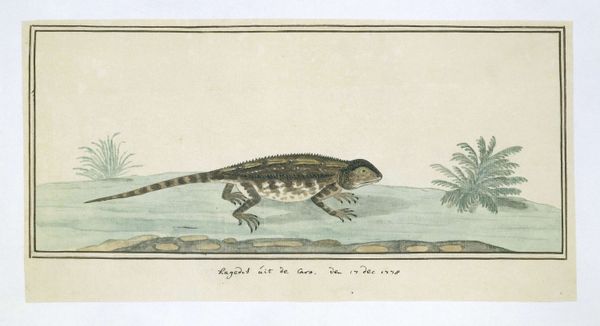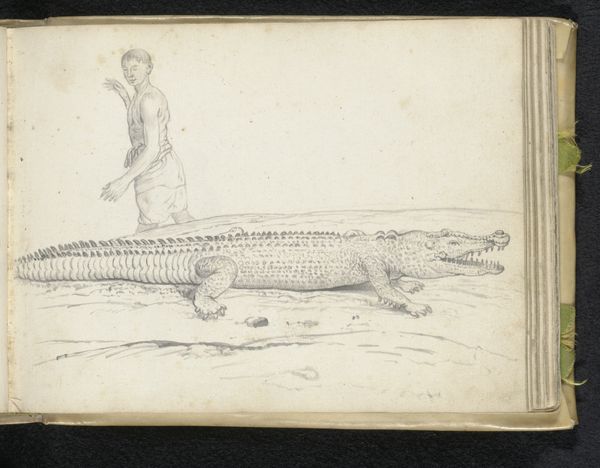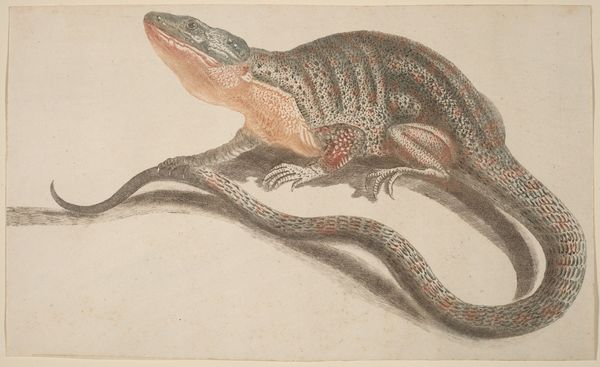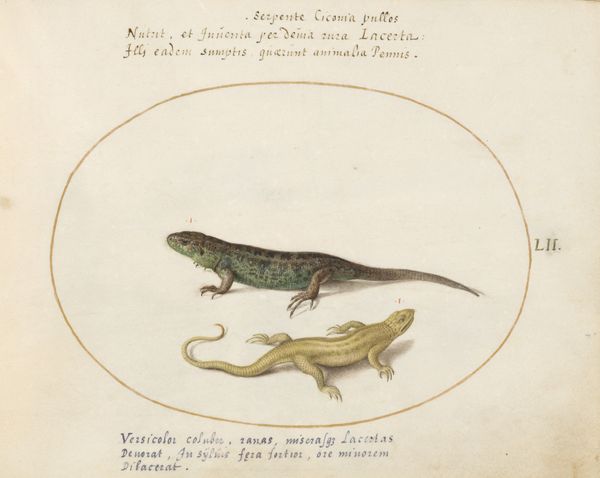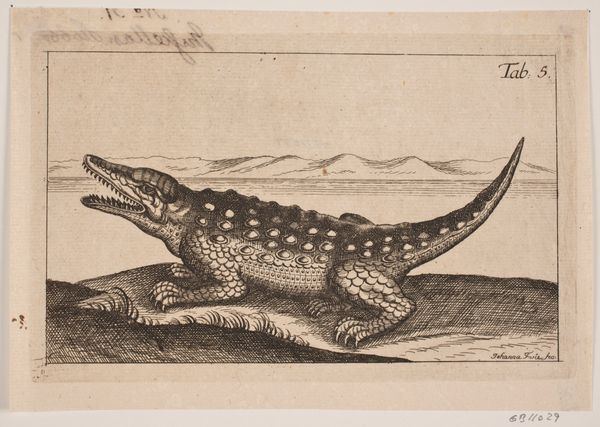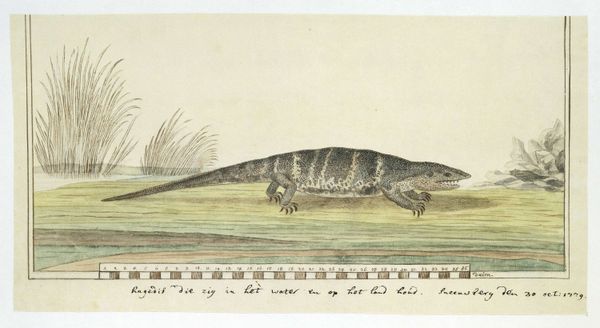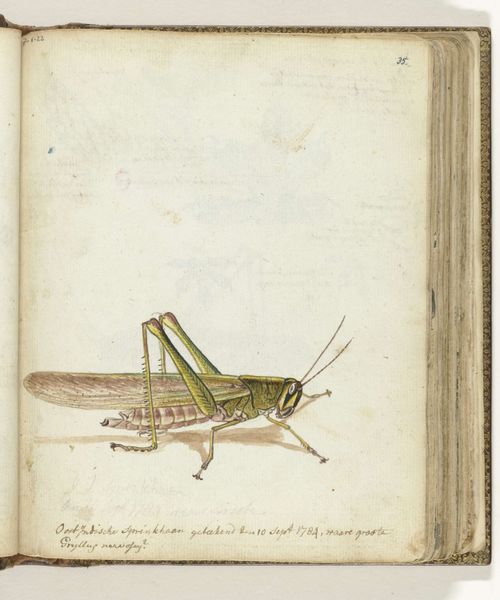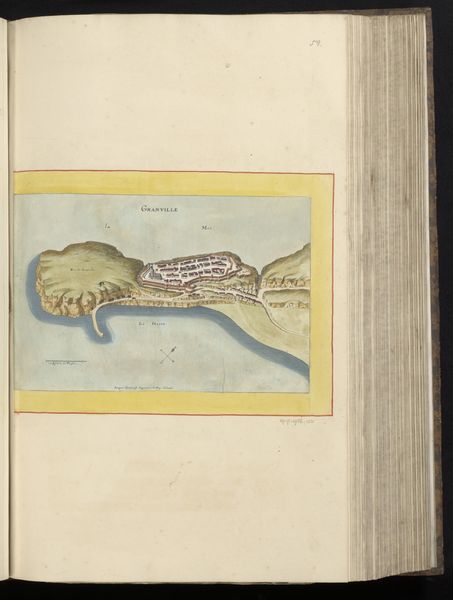
drawing, coloured-pencil, paper, pencil
#
portrait
#
drawing
#
coloured-pencil
#
paper
#
coloured pencil
#
pencil
#
naturalism
#
watercolor
Dimensions: height 155 mm, width 195 mm
Copyright: Rijks Museum: Open Domain
Curator: Here we have Jan Brandes’s, “Land- en waterhagedis,” or "Land and water lizard," possibly from 1785. It’s a lovely rendering, created with pencil and colored pencil on paper. What do you think, Editor? Editor: It's incredibly precise! There’s something quite clinical in the detail. The textures practically invite touch, and the slender form with its tail arching across the page gives an overall impression of coiled tension. Curator: Right. The lizard is rendered with incredible attention to detail, reflecting the scientific interests of the late 18th century and an era captivated by natural history and exploration. Brandes, though known for his travel sketches in Southeast Asia, clearly brought that observational intensity to his renderings of local fauna. Editor: It makes me think about the colonial gaze and how nature, especially in colonized lands, became a site of both scientific inquiry and exploitation. Was this drawing connected to any larger scientific project? Curator: It’s plausible. Works such as this filled albums known as “cabinets of curiosity," often intended to showcase the collector’s worldview and demonstrate dominance. The piece shows Brandes’s role within that cultural framework as much as it catalogues a species. Editor: Precisely. Seeing it that way asks that we view it critically as not just art, but also as documentation shaped by socio-political power dynamics and, in turn, potentially used to exert influence over ecological knowledge and resource distribution. Curator: This colored-pencil drawing reflects this historical dynamic in an evocative and compelling way. Brandes captured the essence of the animal, even if we have to look closely at the circumstances behind his capture. Editor: Absolutely. Engaging with such pieces creates a layered and challenging engagement—an acknowledgment of the beauty alongside a keen consideration of context.
Comments
No comments
Be the first to comment and join the conversation on the ultimate creative platform.
